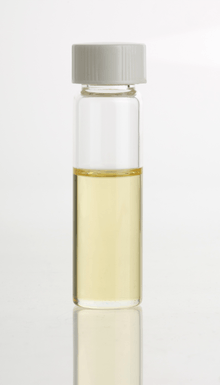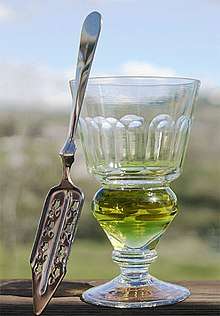Angelica archangelica
| Garden angelica | |
|---|---|
 | |
| Scientific classification | |
| Kingdom: | Plantae |
| (unranked): | Angiosperms |
| (unranked): | Eudicots |
| (unranked): | Asterids |
| Order: | Apiales |
| Family: | Apiaceae |
| Genus: | Angelica |
| Species: | A. archangelica |
| Binomial name | |
| Angelica archangelica | |
Angelica archangelica, commonly known as garden angelica, wild celery, and Norwegian angelica, is a biennial plant from the Apiaceae family, a subspecies of which is cultivated for its sweetly scented edible stems and roots. Like several other species in Apiaceae, its appearance is similar to several poisonous species (Conium, Heracleum, and others), and should not be consumed unless it has been identified with absolute certainty. Synonyms include Archangelica officinalis Hoffm. and Angelica officinalis Moench.[2]
During its first year it grows only leaves, but, during its second year, its fluted stem can reach a height of 2.5 meters (just over 8 feet), from that stem the root, which is used in medicinal preparations. Its leaves comprise numerous small leaflets divided into three principal groups, each of which is again subdivided into three lesser groups. The edges of the leaflets are finely toothed or serrated. The flowers, which blossom in July, are small and numerous, yellowish or greenish, are grouped into large, globular umbels which bear pale yellow, oblong fruits. Angelica grows only in damp soil, preferably near rivers or deposits of water.
Angelica archangelica grows wild in Russia, Finland, Sweden, Norway, Denmark, Greenland, the Faroe Islands, and Iceland, mostly in the northern parts of the countries. It is cultivated in France, mainly in the Marais Poitevin, a marsh region close to Niort in the department Deux-Sèvres. Commercially available sources of angelica are often sourced from Hungary, Romania, Bulgaria, Germany and Poland. Some Angelica is sourced from Asia as well, though it may be confused with similar plants like Angelica Glauca, which are also sometimes sold simply as Angelica.
Use and history
.jpg)

From the 10th century on, angelica was cultivated as a vegetable and medicinal plant,[3] and achieved popularity in Scandinavia in the 12th century and is still used today, especially in Sami culture. Angelica is a shamanic medicine among the Saami or Laplanders.[4]
A flute-like instrument with a clarinet-like sound can be made of its hollow stem. Linnaeus reported that Sami peoples used it in reindeer milk, as it is often used as a flavouring agent.
In 1602, angelica was introduced in Niort, which had just been ravaged by the plague. It is used to flavour liqueurs or aquavits, (e.g., Chartreuse, Bénédictine, Vermouth, and Dubonnet), omelettes and trout, and as jam. The long bright-green stems are also candied and used as decoration.
John Gerard's Herball praises the plant and states that "it cureth the bitings of mad dogs and all other venomous beasts".[5]
Angelica is unique amongst the Umbelliferae for its pervading aromatic odour, a pleasant perfume entirely different from fennel, parsley, anise, caraway, or chervil. It has been compared to musk and to juniper. Even the roots are fragrant, and form one of the principal aromatics of European botanical origin.
Angelica archangelica roots have been used in the traditional Austrian medicine internally as tea or tincture for treatment of disorders of the gastrointestinal tract, respiratory tract, nervous system, and also against fever, infections, and flu.[6] The roots are also among the most common botanicals used in gin distillation, often used in concert with Juniper berries and coriander as gin's chief aromatic accord. They are also used in absinthes, aquavits, and bitters, in addition to culinary uses such as jams and omelettes.[7]
The hollow stems of Angelica archangelica are also eaten. The stems are picked clean of their leaves, crystallized in sugar syrup and colored green as cake decoration or as candy.[8]
The fruits are tiny mericarps and are used in the production of absinthes, gins, and other alcoholic drinks.[9] Seeds of a Persian spice plant known as Golpar (Heracleum persicum) are often mislabeled as "angelica seeds," and are not true seeds of Angelica archangelica.
Chemistry
The essential oil content of angelica root varies based on the age of the roots. Generally, the roots have high levels of terpenes, including α-pinene and β-phellandrene.[10] Studies have found upwards of over eighty different aroma compounds present in samples. Of particular interest to perfumers and aroma chemists is Cyclopentadecanolide, which although present in small quantities (< 1% in roots, <.5% in seeds), it's primarily responsible for angelica root's distinctive musky aroma[7] and was originally found in the roots.[11]
Though the essential oil yield of Angelica seeds are slightly higher,[8] it's the roots which are generally preferred for culinary and aroma uses.[7]
Angelica seeds have a similar chemical composition to the roots, including α-pinene, β-pinene, camphene, myrcene, β-phellandrene, limonene, caryophyllene, borneol, carvone and others.[10]
Both the seeds and roots contain coumarins and furocoumarins. Among these are 2′-angeloyl-3′-isovaleryl vaginate, archangelicin, oxypeucedanin hydrate, bergapten, byakangelicin angelate, imperatorin, isoimperatorin, isopimpinellin, 8-[2-(3-methylbutroxy)-3-hydroxy-3-methylbutoxy]psoralen, osthol, ostruthol, oxypeucedanin, phellopterin, psoralen and xanthotoxin, can be isolated from a chloroform extract of the roots of A. archangelica[12] as well as several heraclenol derivatives.[13] The water root extract of A. archangelica subsp. litoralis contains adenosine, coniferin, the two dihydrofurocoumarin glycosides apterin and 1′-O-β-d-glycopyranosyl-(S)-marmesin (marmesinin), 1′-O-β-d-glucopyranosyl-(2S, 3R)-3-hydroxymarmesin and 2′-β-d-glucopyranosyloxymarmesin.[14]
Etymology
Archangelica comes from the Greek word "arkhangelos" (=arch-angel), due to the belief that it was the archangel Michael who told of its use as medicine.
In Finnish it is called väinönputki, in Kalaallisut kuanneq, in Northern Sami fádnu, boska and rássi, in English garden angelica, in German Arznei-Engelwurz or Echte Engelwurz, in Dutch grote engelwortel, in French angélique, in Persian Sonbol-e Khatāyi سنبل خطایی, in Swedish kvanne, in Norwegian kvann, in Danish kvan, in Icelandic hvönn, in Polish arcydziegiel, angelika, dzięgiel lekarski, dzięgiel wielki, anielskie ziele, archangielski korzeń, anielski korzeń, and in Faroese it has the name hvonn.
See also
- Heracleum persicum (golpar)
References
- ↑ "Angelica archangelica". Germplasm Resources Information Network (GRIN). Agricultural Research Service (ARS), United States Department of Agriculture (USDA). Retrieved 2008-03-03.
- ↑ "Angelica archangelica L. | Plants of the World Online | Kew Science". Plants of the World Online. Retrieved 2018-07-30.
- ↑ http://www.botanical.com/botanical/mgmh/a/anegl037.html | Ed Greenwood 1995, Electronic version of A Modern Herbal: The Medicinal, Culinary, Cosmetic and Economic Properties, Cultivation and Folk-Lore of Herbs, Grasses, Fungi, Shrubs & Trees with their Modern Scientific Uses, by Mrs. M. Grieve, first published 1931.
- ↑ The Earthwise Herbal: A Complete Guide to Old World Medicinal Plants, Matthew Wood, 2008, p94
- ↑ Grieve, Maud (1971). A Modern Herbal: The Medicinal, Culinary, Cosmetic and Economic Properties, Cultivation and Folk-lore of Herbs, Grasses, Fungi, Shrubs, & Trees with All Their Modern Scientific Uses, Volume 1. p. 39.
- ↑ Vogl S, Picker P, Mihaly-Bison J, Fakhrudin N, Atanasov AG, Heiss EH, Wawrosch C, Reznicek G, Dirsch VM, Saukel J, Kopp B (7 October 2013). "Ethnopharmacological in vitro studies on Austria's folk medicine - An unexplored lore in vitro anti-inflammatory activities of 71 Austrian traditional herbal drugs". J Ethnopharmacol. 149 (3): 750–71. doi:10.1016/j.jep.2013.06.007. PMC 3791396. PMID 23770053.
- 1 2 3 Jelen, Henryk (2011-10-25). Food Flavors: Chemical, Sensory and Technological Properties. CRC Press. ISBN 9781439814918.
- 1 2 Source Book of Flavors - Springer. doi:10.1007/978-1-4615-7889-5.
- ↑ Gualtiero Simonetti (1990). Stanley Schuler, ed. Simon & Schuster's Guide to Herbs and Spices. Simon & Schuster, Inc. ISBN 0-671-73489-X.
- 1 2 Burdock, George A. (2016-04-19). Fenaroli's Handbook of Flavor Ingredients, Sixth Edition. CRC Press. ISBN 9781420090864.
- ↑ Burdock, George A. (1997). Encyclopedia of Food and Color Additives. CRC Press. ISBN 9780849394140.
- ↑ Strategy for the isolation and identification of coumarins with calcium antagonistic properties from the roots of Angelica archangelica. P. Härmälä, H. Vuorela, R. Hiltunen, Sz. Nyiredy, O. Sticher, K. Törnquist and S. Kaltia, Phytochemical Analysis, January 1992, Volume 3, Issue 1, pages 42–48, doi:10.1002/pca.2800030108
- ↑ Further heraclenol derivatives from Angelica archangelica. Sun H and Jakupovic J, Pharmazie, 1986, volume 41, number 12, pages 888-889, INIST:7473899
- ↑ Dihydrofurocoumarin glucosides from Angelica archangelica and Angelica silvestris. John Lemmich, Svend Havelund and Ole Thastrup, Phytochemistry, 1983, Volume 22, Issue 2, Pages 553–555, doi:10.1016/0031-9422(83)83044-1
Further reading
- Blanchan, Neltje (2005). Wild Flowers Worth Knowing. Project Gutenberg Literary Archive Foundation.
- Le MT, Lanaspa MA, Cicerchi CM, Rana J, Scholten JD, Hunter BL, et al. (2016) Bioactivity-Guided Identification of Botanical Inhibitors of Ketohexokinase. PLoS ONE 11(6): e0157458. doi:10.1371/journal.pone.0157458
External links
- eFloras: Angelica archangelica
- Angelica archangelica List of Chemicals (Dr. Duke's)
- Botanical.com Herbalist
| Wikimedia Commons has media related to Angelica archangelica. |
